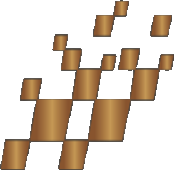Two super AWD options in the same price bracket

My Value / My Purpose / My Car
The Hyundai Tucson and the Mitsubishi Outlander Aspire
Hyundai Tucson 2.0D N Line AT AWD from R799 900
Mitsubishi Aspire 2.5L S-AWC (Super All Wheel Control) from R789 995
The fourth-generation Tucson, which is the best-selling vehicle for Hyundai with over 7 million sales worldwide, is an international sensation hailing from South Korea. Its sensuous and sporty 'Parametric Dynamics' design theme, while striking and modern, might be a bit too avant-garde for those who prefer the timeless, classic, clean, and elegant lines found in the latest fourth-gen Japanese crafted Outlander, Mitsubishi's flagship model, but never the less, these two AWD derivatives offer much more than just their appearance, lets tell you why they will add value to your lifestyle. It's important to recognize that the art of car design runs deeper than what meets the eye. These design choices set the tone for the values and experiences you wish to convey and encounter when selecting a vehicle.
AWD Versatility. Both the Tucson and the Outlander offer the confidence to venture off-road when necessary. While they aren't designed for rugged 4x4 excursions, they handle gravel conditions better than their two-wheel drive counterparts. This versatility allows you to explore numerous off-the-beaten-path destinations throughout South Africa and there are many off the beaten track destinations that are worth exploring. The Mitsubishi Outlander is equipped with a 2.5L four-cylinder engine, delivering 135kW@6000rpm Max Output and 245Nm@3600rpm of Torque through an 8-speed CVT transmission will be one of the better CVT box experiences that you can find. Its 4WD lock provides full-time AWD capabilities, with a default torque split of 60% to the rear and 40 % to the front. When traction is lost, the rear can receive up to 70% on demand. On the other hand, the Tucson boasts a 2.0-liter four-cylinder turbo-diesel engine, generating 137kW of power (4000rpm) and a substantial 416Nm of torque (2000-2750rpm). It comes with an eight-speed automatic transmission and an all-wheel-drive HTRAC system. The HTRAC system constantly monitors various vehicle inputs to calculate the necessary torque for each wheel. It reroutes power between the front and rear axles and subtly applies braking pressure to the left and right wheels if slippage is detected, ensuring that traction goes to the wheel that needs it most. Both vehicles instil confidence when you're embarking on uncharted terrains. However, your choice of vehicle isn't just about handling challenging conditions; it's also about how it complements your lifestyle. This includes considerations of luxury, safety, equipment, and its potential resale value as a second-hand option.


According to iSeeCars, the Hyundai Tucson outperforms the Outlander in the second-hand market, offering better depreciation value and higher overall ratings. But this isn't the whole story; factors like dealership location and service plans should also influence your decision. Both the Tucson and Outlander are highly refined, expressive, and accomplished in what they offer to drivers and passengers. The Outlander, with its third-row seats, is particularly suitable for larger families with smaller children, but not as comfortable for average-sized adults. Both vehicles provide adequate engine performance, with the Tucson's higher torque giving it a slight edge in acceleration and top speed. Cabin noise at 120km/h is not a significant concern, as both vehicles offer comfortable seating and driver-centric controls that outweigh the possible road & wind noise.
Safety aspects, the latest Outlander received a 5 star ANCAP rating and is equipped with 7 SRS Airbags. The Tucson, fitted with 6 Airbags, holds a 5 star Euro NCAP rating. Both vehicles have rear-view cameras displayed on 8-inch Apple/Android CarPlay units. The Tucson boasts ventilated seats and a heated steering wheel, while the Outlander provides heated seats for both the driver and front passenger. Both vehicles offer ample connectivity points and ventilation for the rear seats. Our short stints on gravel roads demonstrated that the electronic brake force distribution (EBD) systems in both vehicles are supportive without being overly intrusive. Their AWD systems provide solid support for gravel driving. The vehicles, now in their fourth generation, have a lot of new technological advances to offer. The Tucson's ample torque, decent fuel consumption (around 8L/100km), superior warranty (5 years/150,000km), 6-year/90,000 service plan, and better resale value figures may make it the better value for money option. However, don't overlook the Mitsubishi Outlander when you take it for a test drive. Both vehicles have the potential to enhance your lifestyle significantly and offer accomplished drive experiences.
TUCSON SPECIFICS: & Test Drive
